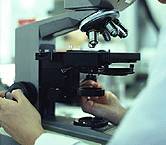
MONDAY, March 7 (HealthDay News) — In a potential advance in the field of tissue engineering, researchers report that they’ve been able to repair injured urinary systems in boys by using bladder cells grown in a laboratory.
Currently, physicians use pieces of skin to repair the urethras of boys whose groins were injured in car accidents or other traumas, but the procedure often fails. In the new cases, surgeons tried a different approach, reconnecting the severed urethras with tube-like structures created with bladder cells. The boys, who had the procedures several years ago, are said to be doing fine now.
The study shows that “tissues can be engineered using the patients’ own cells, and they last long term,” said Dr. Anthony Atala, director of the Wake Forest Institute for Regenerative Medicine and a co-author of the study.
There are caveats about the findings, however. The injuries sustained by the boys are rare, and the study included just five boys. The procedure needs more testing, and it’s not known if it would work in adults. And, creating body parts from cells — the crux of tissue engineering’s potential — remains an immense challenge.
Still, “we are definitely a step further in demonstrating that the results that have been reported in animals can be translated to clinic,” said Dr. Karl-Dietrich Sievert, professor of urology at the University of Tuebingen in Germany, who wrote a commentary accompanying the study, which was published online March 8 in The Lancet and was funded by the U.S. National Institutes of Health.
The boys who underwent the procedures at a hospital in Mexico City were 10 to 14 years old. They had sustained injuries that had severed their urethras, making it impossible for them to urinate properly and requiring them to use catheters.
Car injuries and falls are common causes of such injuries, Atala said.
The researchers took bits of tissue — about half the size of a postage stamp — from the boys’ bladders and then grew the bladder cells into urethra-like tubes. Surgeons then reconnected the severed urethras with the tubes.
The boys have been doing well for as long as six years, according to the study. The results show “that these are actually able to work in the long term, and that they’re able to grow with the patient,” Atala said.
He said it costs about $5,000 to create a replacement urethra. He didn’t know the cost of the surgery but said the procedure would save money over time because these types of procedures would not need to be redone, unlike the method currently used.
In the big picture, Atala said, the findings could pave the way for the creation of other tube-like structures in the body, such as replacement arteries.
For now, however, products of tissue engineering are rarely used in medicine outside of skin grafts, said Nenad Bursac, associate professor of biomedical engineering at Duke University. One hurdle is cost, he said.
However, Bursac said, research is continuing and scientists are in the early stages of testing products for the repair of cartilage, the cornea and the heart.
More information
Cornell University has more about tissue engineering.

